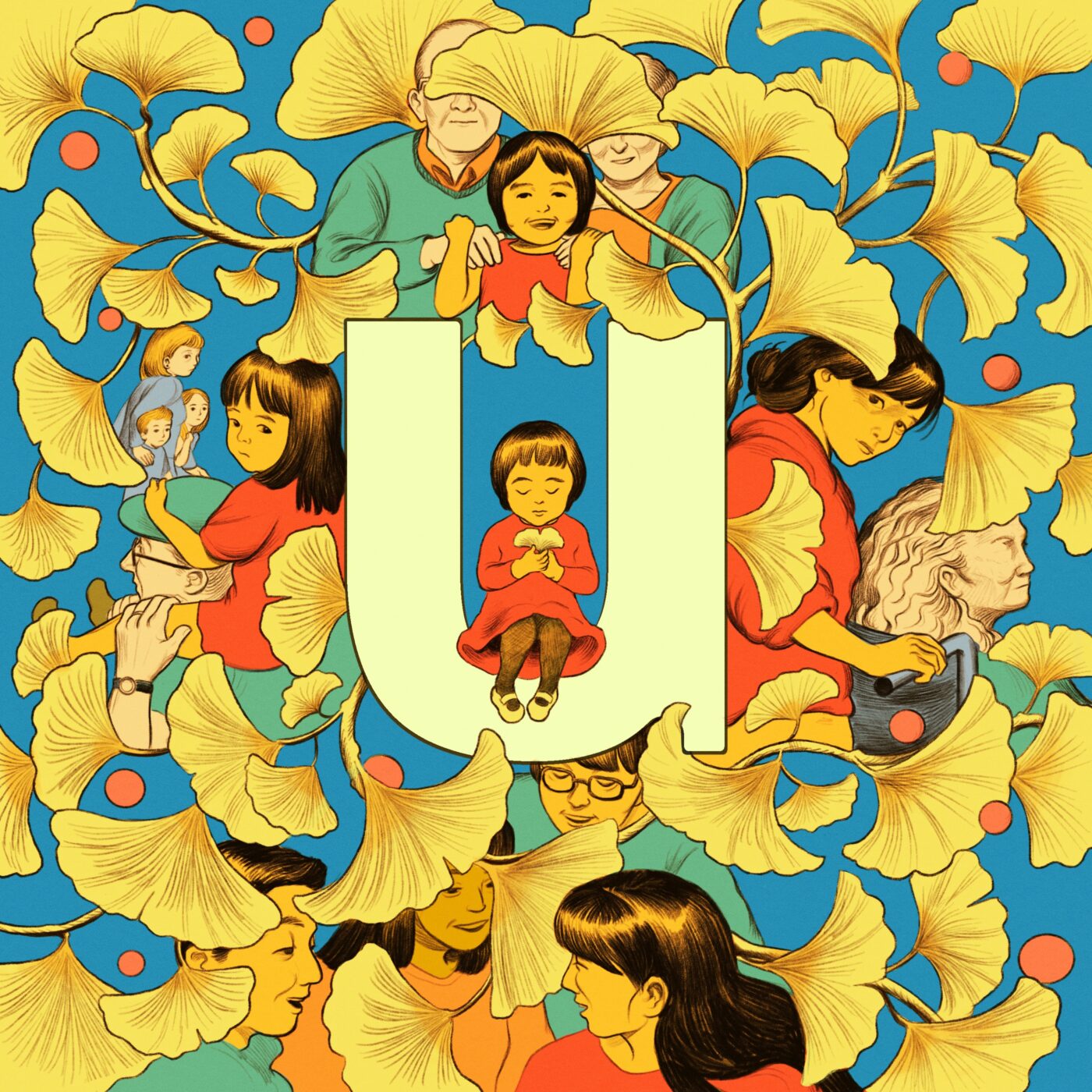Exploring the Expansive Embrace of Asian American and Pacific Islander (AAPI) Heritage Month with artist Julie Benbassat
We’re honored to have commissioned artist Julie Benbassat to share her perspective and experience as an international transracial adoptee. As part of our Justice, Equity, Diversity, and Inclusion (JEDI) initiative, we engage with a diverse group of talented artists to reimagine Utile’s logo in honor of commemorative observance months throughout the year. See her work and artist statement below.

Statement from the artist:
When I was approached to do this piece for Asian Pacific American Heritage month I was initially worried that my own experience as a Chinese Transracial Adoptee would in some way hinder the piece from portraying an “authentic” Asian American experience. I think this anxiety manifested as a fear that my story would be intrinsically linked to Whiteness and removed from the cultural divides that so many other Asian Americans and their biological families will face. After a long talk with the design team at Utile as well as talking to many of my Asian American and Asian Adoptee friends I realized this fear was not just my anxiety of overstepping my place running amuck but also a disservice to the international transracial adoptees who do not often get to see their voice portrayed through art.
Coincidentally this year I was experiencing what many adoptees (transracial or not) call “coming out of the fog.” This term can mean many things to different people but the common understanding is that one starts to realize the gravity of how much adoption has affected their lives and how much they have suppressed in order to fit into society. This “coming out” per say was fueled in part by my own experience dealing with the death of my father and the slow decline of my mother to dementia. In grieving my adoptive parents I found myself unearthing the grief of my biological family and the culture I was born into and realizing the divide that race has played in my life more than ever. It’s like double the grief and double the confusion.
While diving deep into my own thoughts on my identity as an Asian American adoptee, I couldn’t help but think of the ginkgo tree. It’s one of the oldest tree species in the world and the last of its kind, while also originating in China; the tree has amassed love from all over the world as a great city/ park resident. I’ve always found solace in their beauty and their rich history, as we’re both beings that have been adopted into a place we did not come from but nonetheless have found a home in. Being the last of their own branch of tree species I also find that they possess a certain grief about them, similar to how many adoptees live with the grief of abandonment and loss from our birth families and the culture we were born into.
I wanted to interweave the leaves of the ginkgo with some moments from my life/ common moments in many adoptees’ lives. I also wanted to show how these moments are all connected like branches on a tree and feed into each other. This intersection of memories and moments impart the feelings of both belonging and isolation, the feeling of being a stranger in your own skin while also showing the solidarity that happens when you meet others with similar backgrounds. The anxiety that everyone judges you for looking different from your parents, the duality of friendship and alienation from other Asian Americans and the shame and anger of when you’re mistaken for your mother’s aide and not her daughter.
While I cannot encompass all there is to the adoptee experience let alone the Asian American experience, I hope this piece can convey the way in which International Transracial Asian Adoption has affected my life and give solace to others trying to navigate their own identities in a country that oftentimes emphasizes separation over connection.
Julie Benbassat is an illustrator and painter based in Philadelphia. See more of her work at her website: https://www.juliebenbassat.com/